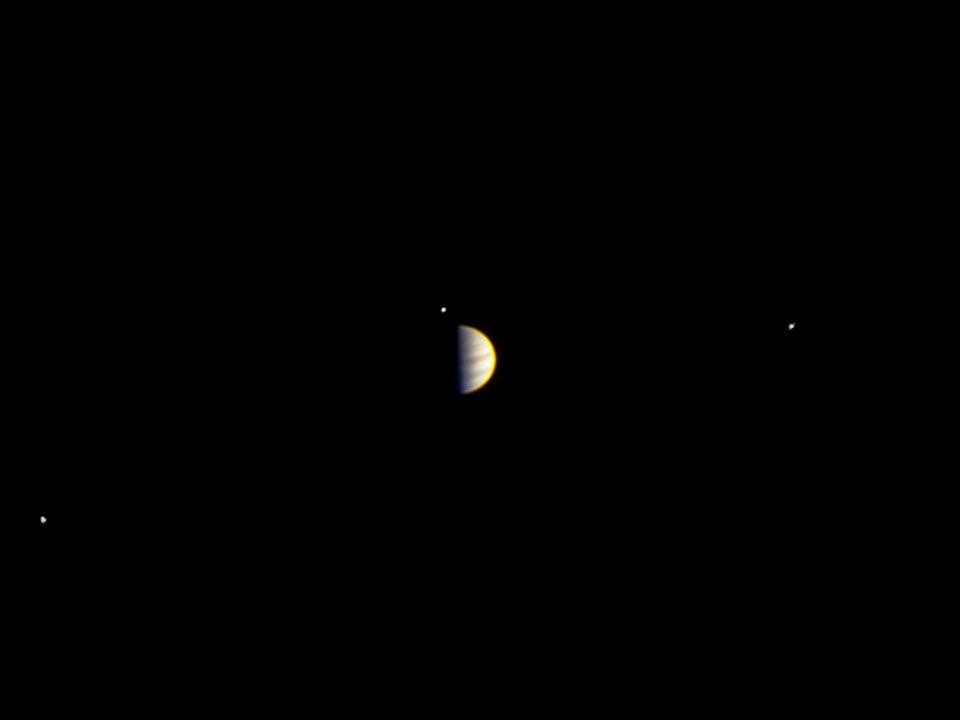Records made this week of astronomy memorable
Records do not just happen. After years of tireless hard work, unimaginable thinking and long penance of scientists above common man, that moment comes and gets recorded in the golden pages of history. This week, mainly millions of kilometers away from the Earth, scientists carried out two incidents, in which one was related to the security of the Earth and the other was an attempt to find another Earth. All the credit for bringing these two big events to the end goes to the American Space NASA. Apart from these, the third major event was Jupiter’s approach to Earth after several decades. These three events made the world of astronomy memorable.
Dart spacecraft collides with asteroid
That moment of 26 September must have been a beating for the scientists who had given many precious years of their lives behind this mission. This was NASA’s Dart mission. In which, on September 26, the spacecraft collided with the asteroid Didymos, more than 10 million kilometers from Earth and changed the path of that body. It was almost impossible, even a nanosecond lapse would have ruined the mission. But it remained unmistakable and for the people of the earth, the great achievement was summed up. Under the mission, NASA launched it on 24 November 2021. NASA had engaged in preparing to hit a couple asteroids and launched this spacecraft from Vandenberg Space Force Base in California on a SpaceX Falcon 9 rocket. After traveling a long journey, the vehicle changed the course of Deformos and Didymos. In this mission, the vehicle collided with Didymos B. The whole world saw its live telecast and we all became a witness to this success. Dart’s goal is to change the direction of the asteroid Didymos. In which the size of one is 2,500 feet (780 m) in diameter. Its companion, Didymos B, is 525 feet (160 m) in diameter.
Asteroids are the biggest enemies of the earth
Actually, the asteroids moving in uneven heights are the biggest enemies of our earth, which have damaged the earth many times in the past. Whose wounds are still present in many parts of the earth. This experiment was very important to protect against objects hitting the earth. So this experiment of NASA was successful. At the same time, the success of this training also found a concrete solution to protect the earth in future.
Second record: Earth’s search for humans in Juno’s Europa
The search for another earth for human habitation is currently the biggest discovery. In this great search, NASA’s spacecraft flew in the uneven of Jupiter’s satellite Europa on 29 September 22 and gave us a map of the Earth’s surface of Europa. In this flight, Juno captured many pictures of Europa’s Earth in the camera. In which the very close pictures were landed in the camera and sent them to the US space agency NASA on Earth. Through these pictures, scientists will now find the possibilities of life on the earth of Europa. This mission was also a successful mission of NASA. About which scientists say that now many secrets of Europa’s earth will be revealed. But it is certain that due to the success of human beings in the search for another earth, it is certain that the day is not far, when they will definitely be able to make another man’s home in distant space. Even though we may not reach the new land, but the coming generations will surely reach the space, look at the earth from far away and say that this is our earth.
Many important pictures taken of Europa’s surface
In this flight, Juno has collected the highest-resolution (0.6 miles, or 1 kilometer, per pixel) image of Europa. In which important pictures of Europa’s ice-capped upper structure, interior, surface structure and ionosphere have been collected. Now scientists will study the obtained data and decide how the Earth of Europa can be useful for humans. However, it is too early to say anything in this direction. Important facts will emerge after careful study.
NASA launched Juno in 2011
Space Research Council NASA launched the Juno spacecraft on 5 August 2011 from Earth to study Jupiter and its satellites. It traveled for about 5 years and reached close to the planet Jupiter on 5 July 2016. NASA has spent about $ 1.1 billion on this mission. It took a long journey of about 5 years to reach Jupiter from Earth.
Juno also reached near Europa in 2021
The Juno spacecraft has already visited Europa. The last time it came close to Europa was on 16 October 2021. Then it took pictures of Europa taken from a distance of about 82,000 km , while this time on September 29, 2022, the distance between Juno and the satellite Europa will be only 538 km. However, Juno is still at a distance of 83397 km from Europa.
Jupiter closer to Earth after 70 years
On September 26, a rare astronomical event happened in the universe. In this event, the distance between Jupiter and Earth was reduced to a distance of 591 million km. Such occasions are rarely seen in our solar system, when the distance between the planets remains very small. Jupiter, this distance was left very short in terms of average distance. Jupiter is the fifth planet in the Solar System, while Earth is the third planet from the Sun. It is 460,718,000 miles (about 741453748.99 km) from the Sun on a normal day. Jupiter is 11 times larger than Earth in size.
It takes 12 years for Jupiter to complete one revolution around the Sun.
You must be aware that this giant planet is gaseous and the star continued to form and today we see it as a planet. One can also say that naturally, Jupiter is not a star. It takes about 12 years to complete one revolution of the Sun. This means that one year of Jupiter is equal to 12 years of Earth. Also know that Jupiter has a day of 9.93 hours and a day of 24 hours on Earth.
https://space23lyear.com/
Source: EarthSky.org, NASA , https://www.missionjuno.swri.edu
And Aries scientist, India

Journalist Space science.
Working with India’s leading news paper.
और अधिक जानें

